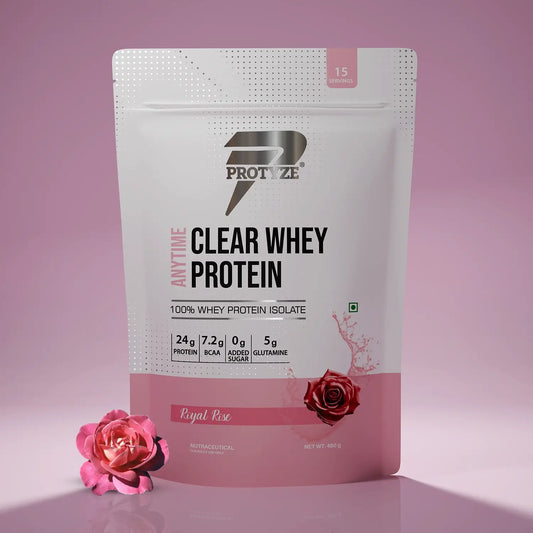Purines are natural compounds found in many foods and within our bodies, playing a key role in cellular function but potentially impacting health when mismanaged. For those striving for optimal wellness, understanding purines is essential, as high levels of their byproduct, uric acid, can lead to conditions like gout or kidney stones.
This blog explores what purines are, why they matter, and how to manage them through diet and lifestyle. We’ll also highlight Protyze Diet Clear Whey, a low-calorie protein supplement, to support a balanced, low-purine diet, helping you maintain health and vitality. Let’s dive into the world of purines and empower your wellness journey!
What Are Purines?
Purines are organic molecules present in certain foods, such as meat and legumes, and produced naturally by the body during cell turnover. When purines are broken down, they form uric acid, a waste product excreted through the kidneys. In moderation, uric acid is harmless, but excessive levels can accumulate, leading to health issues.
Purines are found in varying amounts in foods, with some, like organ meats, being particularly high, while others, like most vegetables, are low. For individuals prone to high uric acid—due to genetics, diet, or lifestyle—managing purine intake is crucial to prevent complications and support long-term health.
Key Facts About Purines
- Sources: Found in animal proteins (e.g., beef, seafood), plant foods (e.g., lentils), and body cells.
- Metabolism: Converted to uric acid, primarily processed by the kidneys.
- Health Impact: High uric acid can cause joint pain, kidney stones, or chronic inflammation.
- Management: Controlled through diet, hydration, and lifestyle adjustments.
Why Should You Care About Purines?
High purine intake or poor uric acid excretion can elevate uric acid levels, leading to several health concerns:
- Gout: A form of arthritis where uric acid crystals form in joints, causing intense pain and swelling, often in the big toe or knees.
- Kidney Stones: Uric acid can crystallize in the kidneys, forming painful stones that disrupt function.
- Chronic Inflammation: Elevated uric acid may contribute to low-grade inflammation, affecting joints and overall health.
- Other Risks: High uric acid is linked to metabolic issues, such as weight gain or insulin resistance, complicating wellness goals.
For women and men alike, especially those with a family history of gout, kidney issues, or high-protein diets, monitoring purine intake is a proactive step. By choosing low-purine foods and maintaining a balanced lifestyle, you can minimize these risks and enhance energy, mobility, and vitality.
High-Purine Foods to Limit
Certain foods are rich in purines and should be consumed sparingly to keep uric acid levels in check. Below are five key high-purine foods, their purine content, and their potential health impacts, along with strategies to reduce intake.
1. Red Meat

Red meats like beef, lamb, and pork are flavorful staples but contain significant purines, ranging from 100-200 mg per 100g. Regular consumption, especially in large portions, can elevate uric acid, increasing the likelihood of gout or joint discomfort. These meats are also high in saturated fats, which may contribute to weight gain, further complicating uric acid management.
Health Impact
- Frequent intake can trigger gout flare-ups and promote inflammation.
How to Limit
- Reduce to 1-2 servings monthly, keeping portions to 50-70g (about the size of a deck of cards).
- Alternatives: Opt for low-purine proteins like eggs or low-fat dairy, which provide similar nutrients with minimal purines.
2. Organ Meats (Liver, Kidney, Heart)

Organ meats, such as liver or kidney, are nutrient-dense but exceptionally high in purines, delivering 200-400 mg per 100g. Even small servings can significantly raise uric acid levels, making them a top food to avoid for those managing purine intake. Their rich flavor makes them tempting, but the health risks outweigh the benefits for regular consumption.
Health Impact
- Can sharply increase uric acid, heightening gout and kidney stone risks.
How to Limit
- Reserve for rare occasions, limiting to 30-50g per serving.
- Alternatives: Choose plant-based nutrient sources like leafy greens or nuts for vitamins and minerals.
3. Certain Seafood (Sardines, Anchovies, Shrimp)

Seafood like sardines, anchovies, and shrimp is prized for its omega-3 content but contains 100-300 mg purines per 100g. Frequent consumption can contribute to uric acid buildup, particularly for those sensitive to purines. While seafood offers heart-healthy fats, high-purine varieties should be moderated to protect joint and kidney health.
Health Impact
- Elevates uric acid, potentially leading to gout or kidney issues.
How to Limit
- Consume 1-2 times monthly, keeping servings to 50-70g (e.g., 5-7 shrimp).
- Alternatives: Select low-purine fish like salmon or plant-based omega-3 sources like flaxseeds.
4. Legumes (Lentils, Kidney Beans)

Legumes, such as lentils and kidney beans, are nutritious plant-based proteins but have moderate-to-high purine content, ranging from 50-150 mg per 100g. For individuals relying heavily on legumes, especially in vegetarian diets, overconsumption can contribute to uric acid accumulation, though their impact is less severe than animal-based sources.
Health Impact
- May increase uric acid, particularly with frequent, large servings.
How to Limit
- Use 2-3 times weekly, keeping portions to 50g cooked (about ¼ cup).
- Alternatives: Choose low-purine legumes like chickpeas or protein-rich tofu.
5. Alcohol (Beer, Spirits)

Alcohol, particularly beer and spirits, contains purines (50-150 mg per 330ml for beer) and impairs the kidneys’ ability to excrete uric acid. This double effect makes it a significant contributor to uric acid buildup, especially when consumed regularly. Alcohol also dehydrates the body, concentrating uric acid further.
Health Impact
- Increases gout risk and promotes kidney stone formation.
How to Limit
- Limit to 1-2 drinks monthly or avoid entirely; prioritize hydration.
- Alternatives: Opt for water, herbal teas, or low-sugar juices to stay refreshed.
Building a Low-Purine Diet
Managing purine intake involves choosing low-purine foods, balancing nutrition, and adopting supportive lifestyle habits. Here’s how to create a diet that minimizes uric acid risks while supporting overall health.
Low-Purine Food Choices
- Proteins: Eggs, low-fat dairy, and tofu provide 10-20g protein per 100g with minimal purines (<50 mg). Protyze Diet Clear Whey (15g protein, 99% lactose-free, Juicy Mango flavor) mixed with water is a low-purine, probiotic-enhanced option for muscle recovery and gut health.
- Vegetables: Cucumbers, carrots, and zucchini contain 0-20 mg purines per 100g, offering hydration and fiber.
- Fruits: Cherries, bananas, and apples are low-purine and rich in antioxidants, helping to reduce uric acid.
- Grains: Rice, oats, and whole wheat provide energy with negligible purines.
Balanced Nutrition
- Protein Needs: Aim for 1.0-1.6g/kg body weight (60-110g for 70kg) using low-purine sources to support muscle health without overloading purines.
- Carbohydrates and Fats: Include whole grains and healthy fats (e.g., olive oil, avocados) for satiety and energy, keeping calories balanced (~1,800-2,000 kcal for maintenance).
- Gut Health: Probiotics support digestion, which can be stressed by high-purine diets. Protyze Diet Clear Whey with water offers probiotics and 15g protein, promoting gut balance.
Lifestyle Habits
- Hydration: Drink 2.5-3L water daily to dilute uric acid and support kidney function.
- Exercise: Engage in moderate activities like walking or yoga (30 min, 3-4x weekly) to maintain weight and improve circulation.
- Weight Management: Maintain a healthy weight, as excess body fat can increase uric acid production.
Sample Low-Purine Meal Plan (70kg Person)
- Breakfast: Oatmeal with berries, low-fat yogurt, banana.
- Lunch: Brown rice, grilled tofu, steamed zucchini, cherry salad.
- Snack: Protyze Diet Clear Whey (15g protein, 99% lactose-free, Juicy Blueberry) with water, handful of almonds.
- Dinner: Whole wheat pasta, egg scramble, cucumber salad, herbal tea.
- Daily: 2.5-3L water, 30 min walking 3x weekly, 7-9 hours sleep.
- Timeline: Noticeable reduction in joint discomfort or fatigue within 2-4 weeks; improved overall health in 6-8 weeks.
Frequently Asked Questions (FAQs)
1. What are purines, and why do they matter?
Purines are compounds found in some foods and in your body. When digested, they break down into uric acid. Too much uric acid can cause health problems like gout or kidney stones.
2. Which foods are highest in purines?
High-purine foods include red meats (like beef and lamb), organ meats (like liver), certain seafood (sardines, shrimp), legumes (like lentils), and alcohol—especially beer and spirits.
3. What health risks are associated with high purine intake?
Excess purine intake can lead to gout, kidney stones, joint pain, chronic inflammation, and metabolic issues like weight gain or insulin resistance.
4. How can I reduce purines in my diet?
Eat low-purine foods like eggs, low-fat dairy, most vegetables, fruits, and whole grains. Stay hydrated and limit high-purine foods to occasional consumption.
5. Is Protyze Diet Clear Whey low in purines?
Yes. Protyze Diet Clear Whey is a low-purine, 99% lactose-free, low-calorie protein drink made with clear whey isolate, making it suitable for those managing uric acid levels.
6. Can vegetarians still consume too many purines?
Yes, especially if relying heavily on legumes like lentils and kidney beans. Moderation and variety are key. Opt for tofu, dairy, and plant-based low-purine options.
7. Does drinking water help with high uric acid?
Absolutely. Drinking 2.5–3 liters of water daily helps flush uric acid through the kidneys and reduce the risk of kidney stones or gout flare-ups.
Conclusion
Purines are natural compounds that, when mismanaged, can lead to elevated uric acid levels, increasing risks of gout, kidney stones, and inflammation. By understanding what purines are and limiting high-purine foods like red meat, organ meats, certain seafood, legumes, and alcohol, you can take control of your health. A low-purine diet, rich in eggs, low-fat dairy, vegetables, and fruits, paired with hydration and exercise, minimizes these risks while supporting vitality. Protyze Diet Clear Whey, with its low-calorie, probiotic-enhanced, 99% lactose-free formula, offers a convenient way to meet protein needs without adding purines, complementing a health-focused lifestyle. Make informed choices and thrive.
TL;DR
Purines are natural compounds found in foods like red meat, organ meats, seafood, legumes, and alcohol. When broken down, they form uric acid—excess of which can lead to gout, kidney stones, and inflammation. Managing purine intake through a low-purine diet (rich in eggs, dairy, vegetables, fruits) helps maintain optimal health. Protyze Diet Clear Whey, with 15g protein and low purine content, supports your fitness and recovery goals while keeping uric acid levels in check. Stay hydrated, exercise regularly, and make smart food swaps to feel your best in 2025!

![What Are Purines and Why Should You Care [Know All About Purine]](http://www.protyze.com/cdn/shop/articles/Purine_blog_banner.png?v=1747055409&width=1100)



